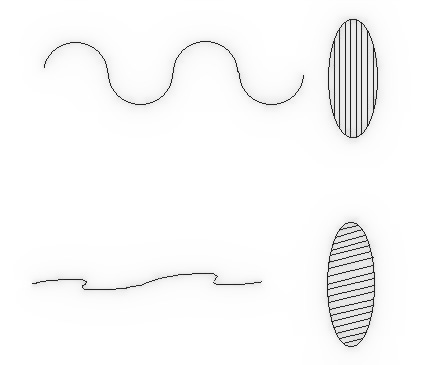
Notice the slight shift in perception between the two pictures from the Mars Pathfinder IMP camera.

NASA/JPL/Caltech
3-D Glasses
by Stephanie Wong
How do 3-D theatre glasses work? You've many times donned these funny-looking spectacles and wondered how do the pictures jump out at you. Through casual observation, you might think that both the lenses on the glasses are merely pieces of plastic. Not so. There is an abundance of physics involved in them. First, let's show you the basics of three-dimensional vision.
The reason we have two eyes is to give us depth perception. Our eyes are positioned a few centimetres apart. If you look through one eye and then the other, you can see the view shift left and right.
 |
Notice the slight shift in perception between the two pictures from the Mars Pathfinder IMP camera. |
 |
| Image Credits: NASA/JPL/Caltech |
(If we were to colorize the left panel red and the right panel blue and combine the two images, we would create a 3D red/blue anaglyph.)
Experiment. Close one of your eyes and hold your two index fingers one above the other, pointing at each other. Bring your fingers together, trying to connect them head on. Difficult, right? That's because looking through one eye only gives you 2-D perception. Imagine drawing two circles on a piece of paper. In a 3-D world, one circle might be farther than the other, but on your flat piece of paper, it doesn't appear so. Looking through both eyes, you can easily touch the points of your finger together.
This helps us understand how clear 3-D glasses work. Like on the piece of paper, a regular movie in a theatre is 2-D. The only way for the movie to appear three-dimensional is for each of your eyes to see a slightly different image. That's where the principle of the polarization of light comes in.
Light is made up of electromagnetic radiation (waves). These waves move in all sorts of directions. For example, you can produce a wave in a Slinky™ toy. You can make it wave up/down, left/right, or diagonally.
 |
Light waves can travel in any position. |
A polarized filter allows only light travelling in one position to pass through. It is made of parallel micro-sized slits that block out all but one position of wave.
 |
A wave in the vertical
plane passes through a vertical polarized filter. |
| A wave in the horizontal
plane passes through a horizontal polarized filter, but would not be able to pass through a vertical polarized filter. |
There are two types of filters in 3-D glasses (i.e. vertical and horizontal). So, one side allows only light travelling in one position to pass through while the other side allows light of the opposite position to pass.
3-D movies are filmed with a stereoscopic camera that records video much like how the Pathfinder IMP above records images. When a 3-D movie is played, two projectors are used to display both perceptions. Each projects a video polarized (with a filter) onto the screen. Wearing the 3-D glasses, each eye can only take in light from one of the projectors. Therefore, each eye receives a different image. Your brain interprets these two separate images and combines them into one 3-D picture.
Next time you view a 3-D movie, take two set of glasses. Place the right-eye filter and place it over the left-eye filter. It's dark. That because the vertical and horizontal filters are combined and no light can enter. They cancel each other.
Red/blue glasses work in a similar manner. The two images are tinted blue and red, respectively. Rather than a polarization filter, though, these glasses only allow certain colours to pass through. The advantage of polarized filters is that what you see is in real colour.
| Home | Contact Us | Credits | Sitemap |
© 2001 - www.imagiverse.org